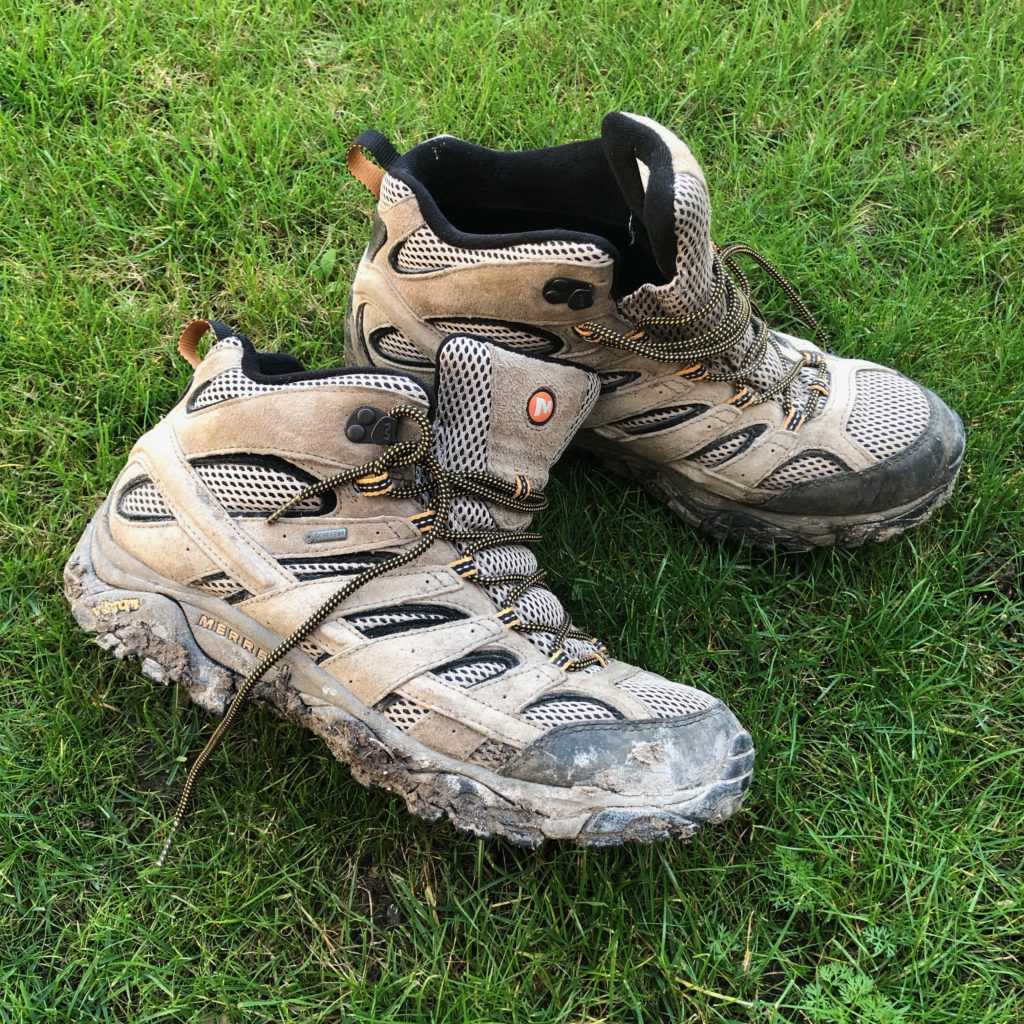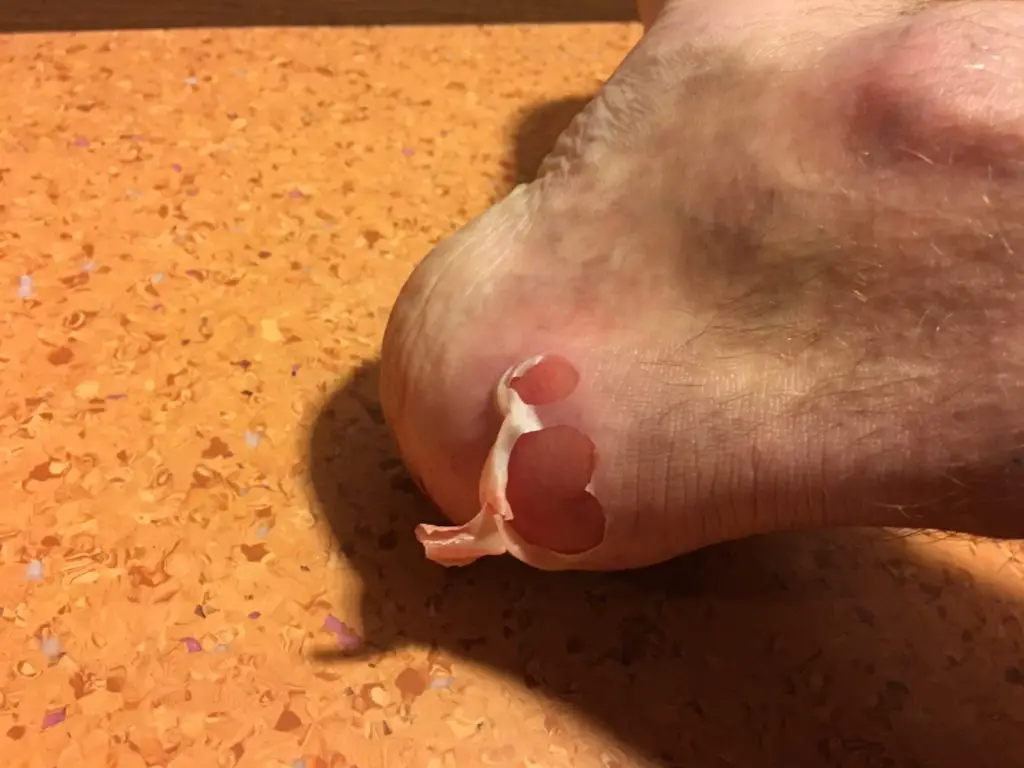The Ultimate Walking Boot Guide
Welcome to the ultimate walking boot guide. Jake and I are seasoned hikers with a number of major expeditions under our belts, so you can trust us to deliver answers to all your walking and hiking boot questions. This guide is designed for seasoned and beginner walkers looking for a better understanding of factors such as fitting, waterproofing, blister prevention and more.
Okay, let’s get down to it.
Here’s a large and growing list of the most asked questions hikers and walkers have when choosing the a new pair of boots.
Choosing the rightwalking boot
Let’s start at the beginning – chossing the right walking boot for you travels is essential. It goes without tsaying the you need to have a good understanding of the demands your hike will place on aboth your body and equipment. The last thing you want is the sole of your boots being punctured by a sharp rock, injuring your foot and destroying your dreams of completing the PCT, or whatever epic trek you’re on.
Here’s a quick overview of the types of boot available and how to match them to the terrain and distances you’ll be travelling.
Trails and well marked paths
If you’re walking and hiking along trails and beaten paths your choices are huge. For the most part you should consider buying a pair of boots that are lightweight and have fairly soft soles. Good ankle support is essential as there is no guarantee you won’t enounter uneven terrain during your hike.
Ensure your toes have enough ‘wiggle’ room to accommodate the inevitable swelling of your feet that comes with walking long distances over hard surfaces. The key here is to choose boots that flexible and rugged. My go-to boots for this type of walking is the Merrell Moab 2 Mid GTX (review).

Rocky terrain and loose scree
Rock-strewn routes and loose scree present many considerations. For the most comfortable travel, chose a pair of boots with a stiff sole, one that won’t flex and injure the soles of you feet when you tread on sharp rocks edges. Ankle support is even more important as the risk of slipping and jarring is higher when moving across rocks and scree.
I find less need for ‘wiggle room’ and prefer a closer fit to this type of boot. The key here is to choose a pair of boots that keep everything in place, preventing your foot from slipping inside the boot and causing blisters.
Boot fitting guide
Now that you have a type of hiking in mind, it’s time to think about the fit. This boot fitting guide isn’t too technical – the key is to choose a pair of hiking boots that feel right for you. We’ll cover offer sizing and the key details I have found to be most important in all my years of stomping over hill and trail.
How should boots fit?
The boot fit should be snug and comfortable, which goes without saying. As we’ve already seen, the exact fitting is dependent on the type of hiking you prefer. Loose, rocky terrain requires a tighter fit and hard, well-beaten trails are more relaxed grip.
Wear the same socks you’ll be hikingin when testing a pair of boots. This is a critical consideration – your everyday socks you wear about the house, or when out and doing your daily thing simply won’t cut it. They’re probably too thin, unless you such a huge fan of hiking that you spend your life wearing hiking gear.
Ask yourself the following questions:
- Does the boot heel slip?
- Do my toes feel feel pinched?
- When you take the boots off, do your mind scream, ‘That’s such a relief!’
If you ansser yes to any of those questions the fit isn’t right. From my point of view, boots should be comfortable. Period. Your feet carry you through life, not just on hikes, and if they’re happy you’re not happy.
Should I buy boots half a size bigger?
Over the years, I’ve seen lots of advice saying you should buy boots a half size bigger. Again, this depends on:
- Your personal preference
- The feel of your boots
- Type of sock you wear
Let’s talk about each of the above poionts.
Personal preference
If you like a little freedom of movement and you have feet made of granite e.g. you don’t suffer from or need to treat blisters then go for a looser fit. Why be uncomfortable? Why pair for hiking boots you can’t wait to take off at the end of a day hiking?

Here’s a thought for anyone new to hiking: don’t assume the in-store expert understands your needs. By all means, listen to the advice, but don’t treat it as Gospel. The person selling the boot may be an expert hiker, but has their own set of requirements.
In this case, walking a mile in someone else’s shoes does not apply.
The feel of your boot
A simple observation and one we’ve already discussed, yet very important. If you wear uncomfortable boots you will feel miserable. Nothing is more likely to leech your enjoyment of hiking than footwear that clamps your toes in a vice-like grip.
Likewise, too much slipping of the heel is a guaranteed recipe for massive, blood-filled blisters. And I don’t want you to experience those – they’re painful and if you’re really unlucky they’ll become infected. Boots that don’t allow any movement at the heel will have the same effect.
The type of hiking sock you wear
First, I’d like to say that there is no best hiking sock. What I mean is you’ll know when you find a pair that’s right for you. During my 400 mile run/hike along the frozen surface of Lake Baikal I wore a pair of Sealskinz cold weather socks and developed only two minor blisters.
In the above case, I found a pair of socks that were both warm and provided the cushioning to help reduce the impact of travelling long distance over rock-hard terrain. And I’ve tested numerous pairs of socks over the years. To my surprise, expensive doesn’t mean the best. That said, do try to find sock that let your feet breathe and don’t compress after a few miles
What are the best walking boots uk?
How to soften leather walking boots
Regardless of the type of hike you enjoy, there is a leather hiking boot out there to suit your needs. Some are supple (so supple that I sometimes feel as if someone else has broken them in for me), whist other boots can feel like inflexible lumps of iron cast around your feet. Don’t worry, we’re going to explore a few tips on how to soften leather boots.
There are three tools in my bag and I’ve found them all to be effective, to varying degrees:
Oil
No, not engine oil. It’s expensive, filled with metal particles that will shred any protective coating on your leather boot and stinks! Trust me on that one, I’ve been servicing and repairing my own cars for many years.
There are many leather softening oils available. Each smells good, protects leather and make your boots give you a misty-eyed grin as you massage the oil into the grain. Most important of all, the oils will make your boots more flexible and less likely to cause blisters.
I like using oil on my boots. If softens the leather and gives an extra level of protection from moisture ingress.
What is the best oil for leather boots?
For me, it’s got to be mink oil (available at Amazon, I haven’t found any other online seller in the UK, but our cousins in the USA seem to have an abundance of the stuff).
Mink oil is just as effective as many of the boot creams you can buy and, in my experience, has given my walking boots a long and happy life. Like any other protective coating, the oil not only keeps the leather supple, it doesn’t restrict breathability.
It’s also inexpensive and can be used on Gore-Tex footwear. Win/win.
Does vaseline soften leather?
Yes. But… most manufacturers don’t recommend using vaseline to soften leather walking boots and shoes. Sure, vaseline aka petroleum jelly will keep the water out of your boots and away from your feet, but it doesn’t allow the leather to breathe which is a big problem is they’re lined with Gore-Tex.
If you’re in an emergency situation, then by all means use vaseline. When you get home, heat the boot to melt the vaseline and use alcohol to clean the jelly from the leather. Wash the Gore-Tex lining to remove any remaining vaseline.
When is the best time to replace walking shoes
As with all thing, time takes its toll. So do the miles you cover and your hiking boots will age, with grace I hope. One day, far in the future, your boots will give you the nod.
You know, the one that says, ‘I’m done, I can’t go any further.’ At that point it will be time to fire a 21 gun salute and send your boots to the big hiking trail in the sky. I’m not joking, having to retire any kind of footwear can be distressing as, over time, they’ll become like a pair of very comfortable slippers.
Signs that tell you to replace to replace your walking boots
You’re the best judge and will simply know. Here’s a few of the more obvious signs:
- The soles are worn down to the point it feels like you’re skating, not walking
- Like an old t-shirt that once hugged your bulging pecs, but now sags, your boots no longer mold to your feet.
- There’s more rust on the eyelets than clinging to the shell of the Titanic.
- Even short distance walks and hikes are uncomfortable due to hardening of the soles.
- Deep cracks criss-cross the leather and water seeps in every time you step out into the rain.
- You start to develop blisters afters many pain-free hikes. This happens when the leather loses shape and sags.
- Stitching fails and the interior of the boot is exposed.
What is the best walking boot for Achilles tendonitis?
Achilles tendonitis is horrible! If you’ve experience this injury you wkno where I’m coming and, to be honest, your safest option is to avoid hiking until the injury has healed. But you’re a hardened hiker and the thought of not being in the wild for six months whilst your Achilles tendon heals is intolerable.
I know, I feel the same.
Let’s assume you’re going to ignore the doctor’s advice and continue to hike. Here’s what you’ll to consider when choosing walking boots when you’re suffering from Achilles tendonitis:
- Well cushioned around the heel and ankle to prevent irritation of the tendon.
- Really good ankle support, preferrably in the form of a thick cuff that reduces jarring and the chance of sprains.
- A fairly rigid sole. Like the ankle support, this helps reduce the amount of unnatural movement your foot will experience.
I can’t vouch for this, but one of my friends who hiked with an Achilles injury said he used Merrell Moab 2 boots and was prety much pain free for the whole three days.
Best insoles for hiking
No walking boot guide would be complete without a section on insoles. Here goes…
The best insoles for hiking are the ones that come with your boots! Outdoor gear manufacturers spend huige amounts on of money researchign and perfecting equipment and rarely do they miss a trick.
If you have a specific need, or issue, then do not buy off the shelf insoles. Instead, go to a specialist insole manufacturer who will create a custom set that meet your needs.




